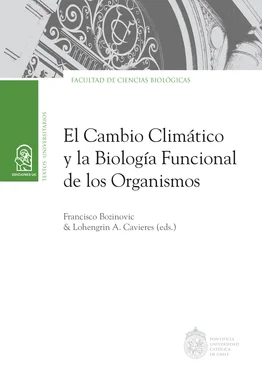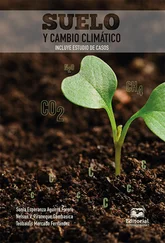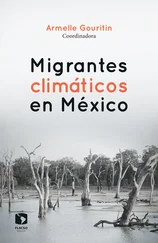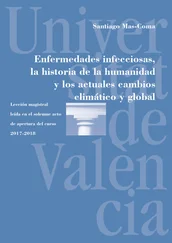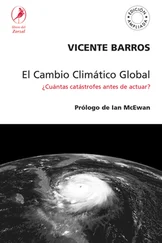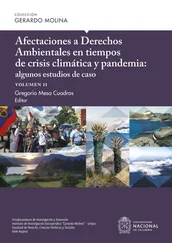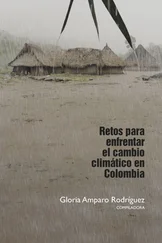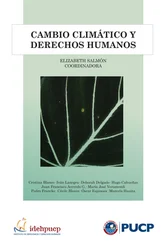Conclusiones
Las consecuencias del ambiente térmico sobre los organismos dependen de las características de la señal ambiental (e.g. intensidad y duración de la exposición), de las características fisiológicas de los organismos (e.g. sensibilidad térmica o TPC) y de su capacidad para responder a los desafíos impuestos por el medio (e.g. plasticidad fenotípica; Cavieres y cols., 2017; Donelson y cols., 2017; Gibbin y cols., 2017). De acuerdo con el Panel Intergubernamental sobre el Cambio Climático (IPCC 2002), el incremento en la variabilidad térmica y en la frecuencia de condiciones ambientales extremas podría tener un impacto aún mayor en la biodiversidad que el aumento en las temperaturas promedio, y estos efectos necesitan ser cuantificados. En este sentido, son vitales estudios que incorporen no solo nuevos escenarios climáticos, sino también los efectos sobre variables fisiológicas. Denny y Helmuth (2009) proponen que una falta de visión fisiológica es el principal impedimento a la predicción exitosa de los efectos ecológicos de los cambios climáticos. De hecho, debido a que históricamente el análisis de los efectos biológicos del cambio climático ha sido principalmente correlativo, existe la necesidad de que el fisiólogo ecológico y evolutivo contribuya a este importante problema con la generación de modelos predictivos (mecanísticos o causales) de la respuesta de animales al cambio climático (ver Huey y cols., 2012). Se necesitan modelos integrativos, que evalúen los efectos del cambio climático a diferentes escalas (mecanismos y patrones), y que evalúen no solo las consecuencias de cambio climático sobre rasgos individuales, sino que incorporen diferentes niveles de organización (desde las moléculas a la historia de vida), considerando por ejemplo las ventanas de vulnerabilidad que tienen los organismos (la respuesta no es lineal a lo largo de la vida, ver Burggren, 2018) y la capacidad para adaptarse al cambio. Con esta información, se generarán predicciones más realistas sobre los efectos ecológicos (poblacionales, comunitarios y ecosistémicos) del cambio climático.
Agradecimientos. Financiado por FONDECYT 1190007, CONICYT PIA/BASAL FB 0002, FIA PYT-2018-00058 a FB, y FONDECYT 11190637 a GC.
Referencias
Abram PK, Boivin G, Moiroux J, Brodeur J (2016) Behavioural Effects of Temperature on Ectothermic Animals: Unifying Thermal Physiology and Behavioural Plasticity: Effects of temperature on animal behaviour. Biol Rev 92: 1859-1876.
Araújo MB, Ferri-Yáñez F, Bozinovic F, y cols. (2013) Heat Freezes Niche Evolution. Ecol Lett 16: 1206-1219.
Arrighi JM, Lencer ES, Jukar A, y cols (2013) Daily Temperature Fluctuations Unpredictably Influence Developmental Rate and Morphology at a Critical Early Larval Stage in a Frog. BMC Ecol 13: 18-18.
Banerjee D, Upadhyay RC, Chaudhary UB, y cols (2014) Seasonal Variation in Expression Pattern of Genes under HSP70. Cell Stress Chaperones 19: 401-408.
Bitner-Mathé BC, Klaczko LB (1999) Plasticity of Drosophila melanogaster Wing Morphology: Effects of Sex, Temperature and Density. Genetica 105: 203-210.
Bozinovic F, Bastías DA, Boher F, y cols. (2011a) The Mean and Variance of Environmental Temperature Interact to Determine Physiological Tolerance and Fitness. Physiol Biochem Zool 84: 543-552.
Bozinovic F, Calosi P, Spicer JI (2011b) Physiological Correlates of Geographic Range in Animals. Annu Rev Ecol Evol Syst 42: 155-179.
Bozinovic F, Catalan TP, Estay SA, Sabat P (2013) Acclimation to Daily Thermal Variability Drives the Metabolic Performance Curve. Evol Ecol Res 15: 579-587.
Bozinovic F, Medina NR, Alruiz JM, y cols. (2016a) Thermal tolerance and survival responses to scenarios of experimental climatic change: changing thermal variability reduces the heat and cold tolerance in a fly. J Comp Physiol B 186: 581-587.
Bozinovic F, Sabat P, Rezende EL, Canals M (2016b) Temperature variability and thermal performance in ectotherms: Acclimation, behaviour, and experimental considerations. Evol Ecol Res 17: 111-124.
Burggren W (2018) Developmental phenotypic plasticity helps bridge stochastic weather events associated with climate change. J Exp Biol 221: jeb161984.
Calabria G, Dolgova O, Rego C, y cols. (2012) Hsp70 protein levels and thermotolerance in Drosophila subobscura: A reassessment of the thermal co-adaptation hypothesis. J Evol Biol 25: 691-700.
Cavieres G, Bogdanovich JM, Bozinovic F (2016) Ontogenetic thermal tolerance and performance of ectotherms at variable temperatures. J Evol Biol 29: 1462-1468.
Cavieres G, Bogdanovich JM, Toledo P, Bozinovic F (2018) Fluctuating thermal environments and time-dependent effects on fruit fly egg-hatching performance. Ecol Evol 00: 1-8.
Cavieres G, Nuñez-Villegas M, Bozinovic F, Sabat P (2017) Early life experience drives short-term acclimation of metabolic and osmoregulatory traits in the leaf-eared mouse. J Exp Biol 220: 2626-2634.
Chevin L-M, Hoffmann AA (2017) Evolution of phenotypic plasticity in extreme environments. Phil Trans R Soc B 372: 20160138.
Chidawanyika F, Nyamukondiwa C, Strathie L, Fischer K (2017) Effects of Thermal Regimes, Starvation and Age on Heat Tolerance of the Parthenium Beetle Zygogramma bicolorata (Coleoptera: Chrysomelidae) following Dynamic and Static Protocols. PloS One 12: e0169371.
Clavijo-Baquet S, Boher F, Ziegler L, y cols. (2014) Differential responses to thermal variation between fitness metrics. Sci Rep 4: 5349-5349.
Colinet H, Lee SF, Hoffmann A (2010) Temporal expression of heat shock genes during cold stress and recovery from chill coma in adult Drosophila melanogaster. FEBS J 277: 174-185.
Colinet H, Overgaard J, Com E, Sørensen JG (2013) Proteomic profiling of thermal acclimation in Drosophila melanogaster. Insect Biochem Mol Biol 43: 352-365.
Colinet H, Sinclair BJ, Vernon P, Renault D (2015) Insects in Fluctuating Thermal Environments. Annu Rev Entomol 60: 123-140.
Cooper BS, Hammad LA, Montooth KL, Wilson R (2014) Thermal adaptation of cellular membranes in natural populations of Drosophila melanogaster. Funct Ecol 28: 886-894.
Dahlgaard J, Loeschcke V, Michalak P, Justesen J (1998) Induced thermotolerance and associated expression of the heat-shock protein Hsp70 in adult Drosophila melanogaster. Funct Ecol 12: 786-793.
Dawson TP, Jackson ST, House JI, y cols. (2011) Beyond predictions: Biodiversity conservation in a changing climate. Science 332: 53-58.
Denny M, Helmuth B (2009) Confronting the physiological bottleneck: A challenge from ecomechanics. Integr Comp Biol 49: 197-201.
DeVries ZC, Appel AG (2013) Standard metabolic rates of Lepisma saccharina and Thermobia domestica: effects of temperature and mass. J Insect Physiol 59: 638-645.
Donelson J, Salinas S, L. Munday P, Shama L (2017) Transgenerational plasticity and climate change experiments: Where do we go from here? Glob Change Biol 24(1): 13-34.
Easterling DR, Meehl GA, Parmesan C, y cols. (2000) Climate Extremes: Observations, Modeling, and Impacts. Science 289: 2068-2074.
Engqvist L, Reinhold K (2016) Adaptive trans-generational phenotypic plasticity and the lack of an experimental control in reciprocal match/mismatch experiments. Methods Ecol Evol 7: 1482-1488.
Estay SA, Clavijo-Baquet S, Lima M, Bozinovic F (2011) Beyond average: an experimental test of temperature variability on the population dynamics of Tribolium confusum. Popul Ecol 53: 53-58.
Estay SA, Lima M, Bozinovic F (2014) The role of temperature variability on insect performance and population dynamics in a warming world. Oikos 123: 131-140.
Feder ME, Hofmann GE (1999) Heat-shock proteins, molecular chaperones, and the stress response: evolutionary and ecological physiology. Annu Rev Physiol 61: 243-82.
Gething M-J, Sambrook J (1992) Protein folding in the cell. Nature 355: 33.
Читать дальше
